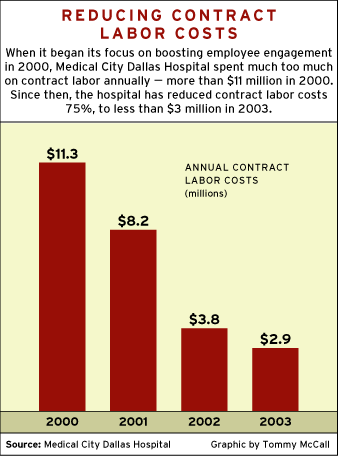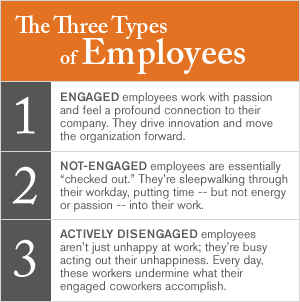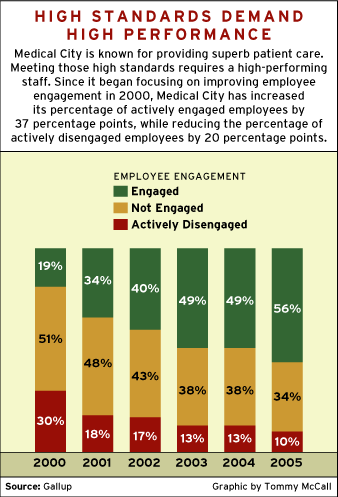In the spring of 2001, two remarkable children made a 500-mile journey from remote Qus, Egypt, to the hospital at the University of Cairo. The newborn sons of Sabah Abu el-Wafa and Ibrahim Mohammed Ibrahim had been whisked to Cairo shortly after their birth because the babies had a rare malformation. They were craniopagus twins, born joined at the crowns of their heads and sharing blood circulation and brain tissue. Their parents sent them on this arduous journey in hopes that something could be done for their sons, Mohammed and Ahmed. Without help, the twins were doomed to a life on their backs; they would never stand, never walk, never have normal lives.
The chief of neonatal surgery admitted that his hospital could not separate the babies without possibly losing one or both of them. And there the story might have ended, but for some good luck.
Fortunately for the twins, one of the physicians at the University of Cairo had studied with Kenneth E. Salyer, M.D., founder of the World Craniofacial Foundation and founding chairman and director of the International Craniofacial Institute and the Cleft Lip and Palate Treatment Center at Medical City Dallas Hospital. The physician asked Dr. Salyer to examine the twins' medical records to see if separation would be possible. In June 2002, the one-year-old twins, along with several doctors and two nurses who had cared for them since their birth, flew to Dallas, Texas. There they put the lives of Mohammed and Ahmed in the caring hands of the staff at Medical City Dallas Hospital.
To the city
 |
In most businesses, employee-customer conversations don't necessarily cover life-or-death matters. Hospitals, however, have a profound relationship with their customers, one that goes far beyond an ordinary customer connection. Disengaged employees -- those who are significantly disconnected from their work -- cost the U.S. economy about $300 billion a year, according to Gallup research. (See "Engagement Keeps the Doctor Away" in the "See Also" area on this page.) But in a hospital, disengaged employees can cost patients much more than money.
When a father travels halfway around the world to the only hospital that can help his baby boys, the responsibility becomes immense. Medical City is committed to providing high-quality healthcare to its community -- one that stretches around the world to embrace patients like the Ibrahim twins. And that's why the hospital leaves nothing to chance with its staff. "It's not pieces and parts of a machine we're dealing with," says Cole Edmondson, Medical City associate administrator of patient care. "It's lives."
Part of the Hospital Corporation of America (HCA), Medical City was founded in 1974 by a group of physicians. Since then, it has grown to become a 598-bed tertiary care center, with 1,250 doctors practicing more than 95 specialties and another 2,600 employees supporting them. Medical City Children's hospital, the world-renowned Dallas Craniofacial Center, and one of the top transplant centers in the country are part of its campus, and patients have come from 75 countries for treatment.
Medical City is such a respected healthcare center that nurses, physicians, and administrators vie to work there, knowing that the experience will be invaluable. That's a good thing -- and a problem. Other hospitals aggressively recruit Medical City's staff because once they've received the benefit of working in one of the country's most respected hospitals, Medical City's former employees are a huge asset to their new employers.
"We would attract the best and brightest, and they'd stay a year or two. Then they'd get drawn away for bigger opportunities," says Edmondson. "Many of them went on to be chief nursing officers, executives, chiefs of staff. It really hurt our continuity." And discontinuity can lead to a host of ills that can devolve into management problems and lead to employee disengagement.
Medical City leaders realized that disengaged employees could pose a real problem to their fellow employees -- and to patients. Actively disengaged employees are less productive, take more sick days, and often spread their discontent to others. Engaged employees, in contrast, are more psychologically committed, are safer and get sick less often, are more productive, and add value to their organizations. Most importantly to a hospital, disengaged doctors and nurses aren't likely to provide superb patient care. And superb care is what Medical City is known for, and it's what keeps those patients streaming in from 75 countries.
That's why the hospital took the brave step of examining itself to uncover problems and identify deficiencies -- and to correct them. Medical City knew that meeting its own lofty standards depended on a high-performing staff.
What you don't know can hurt you
Organizations that want engaged employees take deliberate steps to make engagement part of the culture. Often, they develop their own language and systems to describe and discuss engagement, tweaking the terms to fit their own personalities. Medical City is no different.
Before they began measuring engagement, developing plans to increase it, and putting metrics in place to monitor progress, Medical City's executives determined what they wanted the outcomes to be, based on hospital and patient needs. They call those outcomes the "five indicators": patient satisfaction, employee pride, physician satisfaction, fiscal performance, and community awareness. Medical City brought in Gallup to see how they could improve the indicators.
The initial results were troubling. Even before they started working on employee engagement, Medical City knew they had some problems: too little name recognition in the community, too many vacancies (36%), too much turnover (37% overall, and 34% for nurses), and they spent much too much on contract labor annually -- as high as $11 million in 2000. (See graphic "Reducing Contract Labor Costs.") But it wasn't until the staff had taken the Gallup Q12, a 12-item survey that measures employee engagement, that executives realized that the problems with personnel were different from what they anticipated. "At first, there were a lot of questions about the value of Q12. 'Don't we know about our own people?' We assume we know. We think we know. But it became pretty apparent that we didn't know," says Edmondson.
Among the things Medical City didn't know was that the staff had a general distrust of leadership; staff members felt there was a lack of investment in human capital and communication channels were blocked, if not absent altogether. Thirty percent of the staff was actively disengaged, while only 19% was engaged. (See sidebar "The Three Types of Employees.") All of this culminated in dispiriting overall engagement results: Medical City was in the bottom quartile of all the HCA hospitals that Gallup has studied, even though it was one of HCA's flagship hospitals.
 |
"This is a hard-driving hospital," says Scott Simmons, a Gallup managing partner. "They wanted to make big changes and big improvements, and they don't do anything halfway. So when they implemented the Q12 engagement process, they went at it full speed ahead, 24/7."
Dubbing the process "Employee Pride," Medical City funneled its engagement program through human resources but made every manager accountable for action plans and results. Managers now discuss one or two items from the Q12 every month. (See "Feedback for Real" in the "See Also" area on this page.) This approach keeps the topic of engagement fresh and keeps the staff on track. Staff members are in charge of fulfilling the action plans, but managers are held accountable for the results of their workgroups' Q12 action plans, and CEO Britt Berrett meets personally with department leaders who aren't hitting the mark.
Making managers the pivot point was deliberate. "Managers are the front line; they're the key to hiring and firing, budgeting, strategic planning," says Edmondson. "Managers are the voice of the administration and the voice of the staff, all rolled into one."
Attempting to improve engagement from the top down does not work, Gallup researchers have observed; the effort has to be local to be successful. Making the program manager-led and workgroup-specific also brings to light problems the administration didn't see, or worse, thought they had dealt with.
One of Medical City's lower Q12 scores was on the survey item "I have the materials and equipment I need to do my work right." The materials that employees perceive are essential can be very different, even for similar workgroups. It's also easy to assume success for this item, considering what hospitals spend to keep supply closets full.
"We're constantly reviewing that [item] because it's one of our lowest scores, and it's different for everybody. When you say equipment, do you mean a blood pressure cuff, a new MRI machine, Band-Aids? We have to know what they really mean to make real changes," Edmondson says. "You just can't assume you know this stuff."
No vacancy
Since that first survey in 2000, Medical City has seen significant improvements in engagement, especially among nurses -- and healthcare executives will tell you that finding and keeping great nurses is a high priority for any hospital. Medical City now markets itself as a hospital of specialties -- a huge draw for nurses who want to work in a specific field.
Other organizations have also noted Medical City's outstanding work environment. The hospital counts being named a "magnet facility" by the American Nurses Credentialing Center Magnet Recognition Program, receiving recognition from the Dallas Business Journal as the #1 place to work in its list of top-10 best places to work for 2004 and as #2 in 2003, and receiving the Alfred P. Sloan Award for Excellence in Workplace Flexibility in 2005 among its awards. Medical City has begun using a Gallup selection instrument to help the hospital hire nurses who are like the very best -- and likely to stay.
 |
 |
And the results? The hospital has seen impressive decreases in turnover and vacancy rates. (See graphic "Turnover Trends.") In 2000, the vacancy rate for licensed vocational nurses was 18%, while the vacancy rate for patient care aides was 26%; by 2003, the vacancy rates had dropped to 0% for both positions. In 2000, the hospital had a vacancy rate of 31% for registered nurses; this rate is now down to just 6%.
What's more, recruitment from employee referrals -- often the best source of potential employees and a key indicator of engagement -- jumped from 44% of all referrals in 2000 to 58% in 2003. Contract labor costs dropped by 75% from 2000 to 2003.
And overall engagement rates have skyrocketed: In 2000, only 19% of Medical City's employees were engaged, while 30% were actively disengaged. In 2005, 56% of employees were engaged, while the percentage of disengaged employees has dropped to just 10%. (See graphic "High Standards Demand High Performance.")
Overall, Medical City has made great progress in measuring and improving in key areas of its "five indicators." To monitor its success in increasing employee pride, all staff members take the Q12, and results are closely monitored. The hospital is also using Gallup selection instruments to select nurses and all non-nursing clinical positions.
Medical City is also achieving success in increasing engagement among two key customer groups: patients and physicians. The hospital has instituted a new and more meaningful patient loyalty measurement, which gives the hospital actionable data that link to important outcomes. As for physician engagement, Medical City's 2004 scores ranked it as a best-practice hospital, according to Gallup's physician engagement (CE11) database. "Physicians have a choice about where to send their patients, so it's important for hospitals to keep them engaged," says Simmons. (See "What the Doctor Ordered" in the "See Also" area on this page.) Those are big successes, and, as Simmons says, "There's a lot of leadership talent there. You can actually feel the energy that comes from engagement in that hospital."
Although Medical City has made great strides in increasing employee engagement, it has plans for even more improvements in the future. The hospital must increase physician engagement, work on succession planning, and figure out a way to keep the competition -- which is numerous and active, especially in Texas -- from luring away its doctors and turning them into another hospital's chief of staff. Furthermore, Medical City wants to be in the top 10% of hospitals nationally and within the HCA family on its five performance indicators (patient satisfaction, employee pride, physician satisfaction, fiscal performance, and community awareness). Now that engagement is part of the hospital's DNA, that kind of success is no longer a matter of will; it's just a matter of time.
Improving engagement is critical for a hospital. In an ordinary business, disengaged employees can cost their employers time and money; in this business, disengaged employees can alter people's lives. "An engaged employee is less likely to make errors, and an engaged employee is much more likely to be efficient," says Edmondson.
Why it matters
The story of engagement at Medical City has a happy ending, and so does the story of the family from Qus, Egypt. After months of evaluation and testing, and based on the recommendations of a team of craniofacial experts and medical ethicists, the twins' father decided that pursuing the separation surgery would give his sons their best chance for a normal life. On October 12, 2003, after 16 months of physical and psychological therapy and numerous preparatory surgeries, Ahmed and Mohammed were separated after 34 hours of neurosurgery. They have returned to Egypt, where they will continue to receive physical therapy. But, in the end, the little boys are happy and healthy -- and so is the hospital that made them that way.